Transportation Research Update

SAFETY
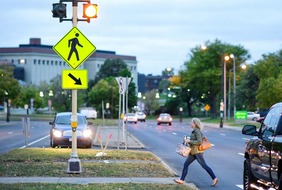
Although drivers are legally required to stop for pedestrians trying to cross a street, they don’t always do so. Many variables may influence whether drivers yield, such as driving speed, characteristics of the road or intersection, and the nature of the land use where the street is located. New research gives local engineers guidance on which factors are more likely to encourage driver yielding to support the construction or retrofitting of safe crossings.
Investigators collected data at 18 intersections for two weeks in the Twin Cities area and Northfield. In addition to relevant site characteristics, video footage captured pedestrian crossings and driver behavior. Data revealed the number and type of pedestrians (such as whether they were on foot; used a bicycle or mobility device; or had a dog, stroller or a small child) and vehicle types and speeds. Factors that correlated with higher driver-yielding rates included vehicle speeds under 25 mph, crossing signs and areas with amenities such restaurants or parking lots. While transportation agencies don’t control all potentially influential driver-yielding factors, having knowledge of them will support pedestrian-safe roadway designs.
|

To improve the visibility and safety of pedestrian and bicyclist crossings, traffic safety professionals across Minnesota have installed the Rectangular Rapid Flashing Beacon (RRFB) and Pedestrian Hybrid Beacon (PHB) at numerous locations around the state.
The before-after analysis found that installation of an RRFB resulted in a 67% decrease in fatal crashes and a 62% decrease in bicyclist crashes, while installation of a PHB resulted in a 53% decrease in suspected minor injury crashes, a 67% decrease in pedestrians crashes, and a 50% decrease in bicyclist crashes.
The results of the cross-sectional analysis found that both treatment sites and control group sites experienced crash reductions and that the differences between the two groups were not statistically significant. Still, the decreases in severe crashes and crashes involving non-motorists at RRFBs and PHBs indicate that both types of beacons can be effective safety treatments.
|
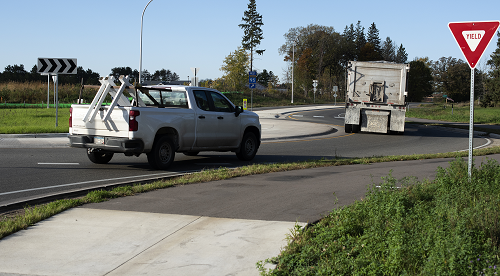
Modern roundabouts have been shown to be one of the safest methods of control for at-grade intersections. An evaluation of traffic safety at roundabouts published by MnDOT in 2017 shows substantial decreases in fatal and serious injury crashes at intersections after installation of a roundabout. Despite these benefits, concerns have been raised from citizens, commercial motor vehicle (CMV) drivers, and other stakeholders about the propensity for roundabouts to cause more rollover crashes for larger vehicles. The purpose of this evaluation was to further evaluate the safety of heavy commercial vehicles at roundabouts, investigate whether rollover crashes are more likely to occur at roundabouts, and break down the most common characteristics for CMV crashes at roundabouts in Minnesota.
The results of this evaluation indicate that roundabouts continue to be one of the safest forms of intersection control for heavy commercial vehicles, especially when compared to traffic signal control. Though roundabouts have experienced a greater number of rollover crashes compared to intersections with traffic signal control, their installation results in a decrease in high-severity crashes.
|
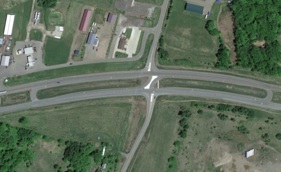
MnDOT traffic engineers strive to limit crash risk at intersections on multilane highways by decreasing the points where vehicle paths can cross. One alternative design is a J-turn intersection, where instead of crossing multiple lanes of traffic as in a traditional intersection, drivers turn right onto the main road, merge into the left lane and make a U-turn. While the traveling distance may be greater than at a traditional intersection, the time it takes is often less.
Following up on a previous study, researchers analyzed crash data from intersections before and after installation of J-turns. They also explored differences in crash history among J-turns with varying characteristics. The results demonstrated significant safety benefits of J-turns compared to traditional intersections. Consistent with previous results, this analysis found a clear decrease in fatal and other serious crashes after the installation of a J-turn. The comparison of J-turns with different characteristics will help engineers fine-tune the intersection design.
|
PUBLIC TRANSIT
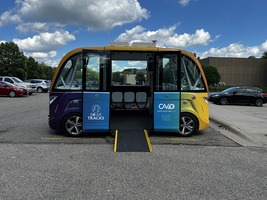
Public transportation is a safe, affordable, convenient and environmentally friendly alternative to individual vehicles. Outside of densely populated urban settings, however, land use patterns can challenge public transit effectiveness. Limited transit stops and network coverage necessitate walking or other transport modes, potentially in unsafe conditions.
An autonomous mobility-on-demand (AMoD) service could help passengers get from the end of a transit line to their destination. An AMoD system uses a fleet of autonomous vehicles to pick up passengers and transport them to a destination. Using modeling and algorithms, researchers designed an AMoD service for a large, vehicle-oriented suburban shopping area. A simulation of the system revealed its potential to increase transit efficiency and demand, resulting in reduced individual vehicle use. Additional research and possible demonstration or pilot projects could move AMoD closer to implementation.
|
PAVEMENT
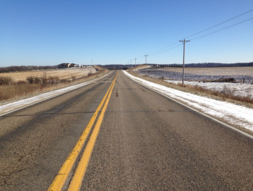
Two Olmsted County roads provided a testing ground for monitoring the performance of pavement materials and construction methods. Results from this final phase of a multiphase study confirm previous results, indicating a larger gradation aggregate pavement base performs better than the standard aggregate base. Additionally, sections constructed without transverse joints to allow natural thermal cracking outperformed sections with
sawn and sealed joints.
|
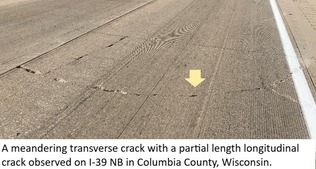
Cracking and spalling of concrete pavements reduce the service life of the roadway and result in added costs to an agency and disruptions to the traveling public when the damage is repaired. Cracks and spalls in concrete occur due to a wide range of reasons. This initial phase focuses on cracking associated with dowel bars and tie bars in concrete pavements.
Dowel bars and tie bars are typically made of steel, which is stiffer than hardened concrete by about a factor of five to ten. A literature review and field studies suggest that under some conditions, restraint caused by dowel bars and tie bars in the concrete result in high early age stresses that contribute to cracking. The field evaluation showed that the cracks within the concrete typically start around the depth of the dowel bar near the joint as delamination cracks and then migrate upward toward the surface, eventually breaking up and spalling the concrete. To gain a more detailed understanding of this process, the authors propose a second phase analysis including an evaluation of key parameters and their influence on dowel bar cracking followed by validation through laboratory experimentation and model refinement.
|
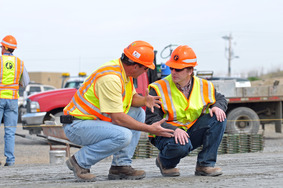
To address climate change mitigation goals, highway agencies are seeking alternative concrete paving mixtures that have a reduced embodied carbon content (ECC). Between July 27 and August 9, 2022, 16 test cells were constructed at the MnROAD I-94 facility to evaluate reduced ECC concrete paving mixtures. The purpose of constructing these cells was to assess the in-service performance, environmental impact, and constructability of various alternative supplementary cementitious materials (ASCMs) that may reduce the embodied carbon content of concrete, while providing an opportunity to assess test results and in-service performance in coming years.
A preliminary environmental assessment showed that most mixtures were expected to have either a similar or lower ECC compared to the control mixture representative of typical MnDOT paving-grade concrete. Quality assurance testing conducted on field-cast specimens revealed generally acceptable results; most of the materials had similar performance compared to the control mixture, but the cells will continue to be monitored.
|
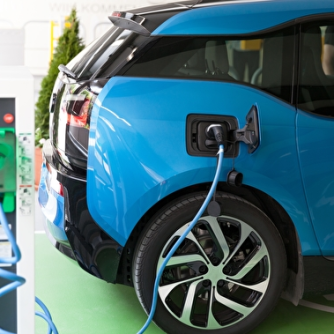
As the number of electric, hybrid, and fuel-efficient gas vehicles increases, the amount of gas tax collected by states declines, reducing funds available for road maintenance and construction. To maintain transportation funding, states have developed several strategies to maintain funding. This synthesis uses published data and interviews to look at current funding options adopted in the United States. These include taxes on EV charging, extra registration fees on EVs and/or hybrids, and special sales taxes on EVs and hybrids.
The report also reflects on the continuing challenges for states. Despite the decisions already in place, there are still questions about their impact on state revenue, policy, and equity for drivers. Do all drivers pay their fair share to maintain the roads? What is a fair share? Will extra registration fees work against the policy mandate to increase adoption of electric vehicles? What is the relationship between purchase incentives, such as sales tax refunds, to the revenue to be expected from increased fees?
|
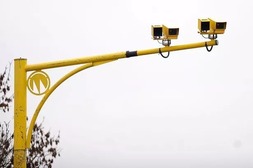
Due to an increase in speed-related fatal crashes on Minnesota roadways and research indicating the effectiveness of speed safety cameras (SSCs) (TRS2303) the Minnesota Legislature is currently considering a bill to allow SSCs in certain test locations. While the effectiveness of SSC programs has been widely agreed on, implementation of SSC programs is complex. This transportation research synthesis was completed to better understand the complexity and best practices for SSC administration and highlight considerations specific to Minnesota if enabling legislation were to be passed by the legislature. It also provides a summary of recent FHWA guidance documents, bi-annual reports from states with active SSC programs, and expert interviews to better understand Minnesota specific considerations. Some of the topics covered in the report include citation type/processing structure, penalties, equity considerations, commercial driver’s license implications, top concerns from stakeholder agencies, public perception and funding.
|
NEWS
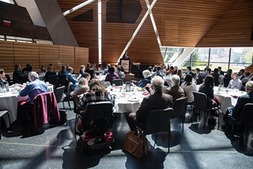
Pedestrian deaths are at a 30-year high nationally, and serious injuries result in financial losses for a lifetime. The impacts on families are immeasurable.
In two major studies, funded by MnDOT and the Local Road Research Board, U of M researchers worked with community, government, and law enforcement partners to explore solutions to stem these losses. Their work was honored with the 2024 CTS Research Partnership Award.
Additionally, transportation leaders and students were recognized at the 2024 CTS Awards Ceremony on May 13. Congratulations to this year’s recipients!
|
Tuesday, July 9, 2024, 9:00–9:45 am
Virtual
Recruiting and retaining transportation maintenance workers is an ongoing and increasing challenge. A current project sponsored by the Minnesota Local Road Research Board seeks to address this by providing easily accessible tools that local agencies can use to help recruit and retain maintenance professionals.
A new website—MNTransportationCareers.com—will launch on Tuesday, July 9, 2024, and serve as a portal for jobseekers, public works managers, human resources departments, employment counselors, and others. It will include easily accessible and sharable videos, brochures, a training guide, job board, case studies, and other resources.
Join us for this webinar hosted by project leaders to introduce and discuss this new resource.
The submission site is open June 1 – August 1. All submissions require a full-length paper. Follow the requirements for submission as shown in the instructions for authors. Don't let your paper be rejected due to a technicality at the last minute. Submit your paper by August 1 or sooner!
Stop by our booth at
the Minnesota Transportation Conference.
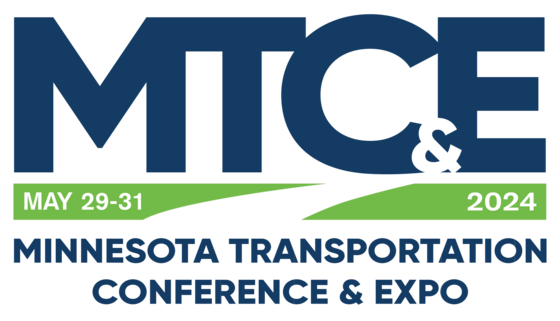 
|